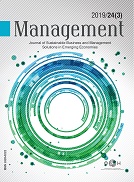Public Health Communication: Skin Cancer Prevention Implications
DOI:
https://doi.org/10.7595/management.fon.2021.0036Keywords:
public health communication, skin cancer prevention, knowledge, attitudes, preventive behaviour, information sourcesAbstract
Research question: What are the characteristics of the target population which public health messages should be tailored to, in order to contribute to skin cancer prevention and early detection? Motivation: The implementation of preventive behaviour is of key importance taking into account the global increase in the incidence of skin cancer over the past decades. Communication campaigns represent an effective tool in creating awareness and education of population on harmful effects of exposure to UVR and a necessity of conducting preventive measures. The basis for creating such campaigns is to examine the knowledge, behaviour and information habits of target population. Idea: To examine the knowledge and attitudes regarding harmful effects of exposure to UVR, as well as preventive practices of adult urban population and determine the main sources of information on this topic. Data: The research took place in the period March-May 2018 in Belgrade and was based on surveing of 237 adult respondents from Belgrade. The sample was acquired by using the method of convenience sampling. Tools: The questionnaire consited of close-type questions with multiple choices of answers regarding socio-demographic characteristics, knowledge about risks of UVR exposure, preventive behaviour and preferred information sources. It was distributed in paper to patients while waiting for their appointments. Obtained data were manually coded and analysed by using SPSS. Results: A majority of both women (45.6%) and men (42.9%) report that they use sunscreens regularly, but a larger percentage of men (25% vs. 11.9%), as well as older respondents did not use sunscreens at all. Women reported to spend longer hours sunbathing (41.9% vs. 33%) and using indoor tanning than men (17.6% vs. 5.2%). Youngest respondents (age 20-30) also claim to practice excessive sunbathing (52.6%) and use indoor tanning (23.2%). Older respondents consider them being at higher risk of skin cancer (68.2% of those older than 60). There is a higher level of awareness of female in comparison with male respondents regarding the importance of skin cancer screening (62.3% vs. 44.7%), as well as of university educated respondents. Television has been noted to be the most significant source of information (57.8%), followed by internet sources (43.5%) and printed media (40.5%). Contribution: Knowledge, attitudes and behaviour, as well as preferred sources of information differ by gender, age and education of respondents so targeted public health campaigns should be tailored to specific characteristics of target groups.
Downloads
Published
How to Cite
Issue
Section
License
Copyright (c) 2021 Management:Journal of Sustainable Business and Management Solutions in Emerging Economies

This work is licensed under a Creative Commons Attribution-NonCommercial-NoDerivatives 4.0 International License.








